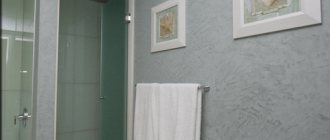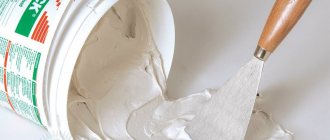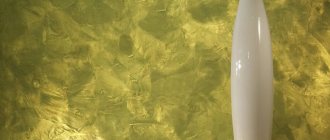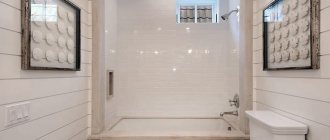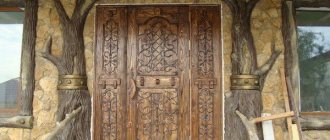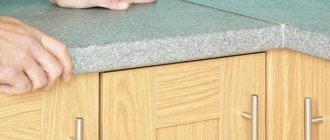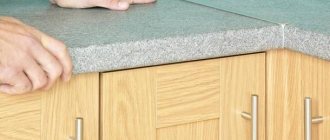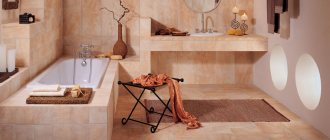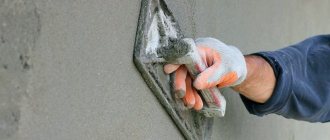It is very easy to prepare the whitening composition yourself.
Primer for whitewashing
First of all, prepare a primer for the ceiling. First, take slaked lime (ideally it should be quite thick) - this is the so-called lime paste. Of course, it must be diluted with warm water. For two and a half kilograms of lime you need approximately five liters of well warm or even hot water. After this, dissolve one hundred grams of ordinary table salt in the mixture.
Add more warm water to the resulting mixture so that you end up with about ten liters of primer. If at this stage there are small particles in the composition, strain the primer through a sieve.
Finally, mix two hundred grams of powdered chalk in wood glue (ten percent). After thorough mixing, when the mixture becomes homogeneous, add it to the primer composition.
When preparing the primer lime mortar, mix it thoroughly at each stage. All ingredients should be evenly distributed in the mixture.
As a result, you will get a primer with which you can prime almost any surface for whitewashing. The mixture is applied with a paint roller or brush.
Preparation of whitewash
There are several common recipes for making whitewash. Perhaps the most popular and simplest one is made from warm water, chalk and wood glue.
To begin, heat approximately five liters of water. The water should be well warm, but not too hot. The optimal water temperature is fifty degrees. Then little by little dissolve three kilograms of sifted chalk in water and add thirty grams of wood glue. This amount of whitewash should be enough to treat fifteen square meters of surface.
The following composition has not become as widespread as the previous one, but it provides the highest quality whitewash.
To prepare a whitening composition according to this recipe, dissolve sixty grams of laundry soap in four liters of hot water. Then add fifteen grams of blue or ultramarine and ninety grams of wood glue to the soap solution. Chalk should be added to the resulting mixture at the very end - approximately two and a half kilograms. This amount of whitewash is enough to treat ten square meters of ceiling or walls.
The third most popular whitewash recipe is called “lime whitewash.” Dissolve two to three kilograms of slaked lime in five liters of warm water. Then, add one hundred grams of ordinary table salt, half a kilogram of dyes to the mixture and bring the volume of the mixture to ten liters. It might not hurt to add a little blue to the whitewash.
By the way, experienced craftsmen claim that table salt for whitewashing can be replaced with potassium alum. True, salt is still simpler - it can be found in any kitchen.
Do it yourself
DIY swing for children Our children are always in active motion, so let's try to diversify their relaxation with the help of a swing. Let's start with a simple option. Children love swings, which...
How to make a bed. DIY laminated veneer lumber bed. The bed is a very important element of any room, be it the bedroom of adults or children. A large comfortable bed in your bedroom is the key to sound sleep and good mood throughout…
DIY wardrobe Today, many owners of both small apartments and large houses are thinking about purchasing a wardrobe. Unfortunately, it is not always possible...
Do-it-yourself corner sofa Of course, a sofa is considered one of the main elements of furniture in the house. This thing is extremely necessary and useful; in addition to a comfortable rest, you can hide a lot of household items in it,…
Do-it-yourself screen Some people think that screens are a thing of the past, not fashionable and worthless. Meanwhile, the screen is a very convenient and beautiful tool for zoning a room. There is a screen in the living room...
Content
Lime is not the easiest material to use. However, it occupies its niche in the building materials market quite firmly and is very reluctant to give up its position. Considering all the advantages and disadvantages, in certain cases the use of lime whitewash is advisable, and sometimes it is more appropriate to choose another method.
Important properties of lime whitewash ↑
The lime known to everyone from school is called calcium oxide in chemistry textbooks. For whitewashing, slaked lime is used, that is, it has reacted with water. Chemically speaking, slaked lime is a strong base - an alkali. It has good disinfectant properties, because an aggressive alkaline environment has a detrimental effect on fungus, insect pests and other unwanted living creatures.
Lime whitewash is not afraid of humid air, does not crack or bubble. In addition to resistance to high humidity, walls treated with this substance are resistant to temperature changes.
For whitewashing it is not necessary to wash off the existing coating; it can be applied to the old finish. Moreover, if a network of small cracks has formed on the surface of the walls or ceiling, treatment with slaked lime solution will strengthen the finish and extend its service life.
The cost of lime for whitewashing in stores cannot be compared with the price of other finishing materials. This is due to the fact that the production process is very simple - it is a simple firing of limestone in a kiln. Raw materials cost pennies, so the price of the product is low. A thirty-kilogram bag costs about $2.
Where and why is it advisable to use lime ↑
The properties of an antiseptic and fungicide make slaked lime a leader among finishing materials for damp and cold rooms: cellar, barn, garage, basement and the like. It is used for walls and ceilings. The weather resistance of the substance allows it to be used for whitewashing facades.
The record holders for using lime for whitewashing and other tasks are summer residents. Here it is applied in full swing. It is customary to whitewash walls both inside and outside, add quicklime to the soil to change its acid-base balance, treat tree trunks to protect them from insects and animals, and borders for beauty.
In those rooms where practicality rather than aesthetics comes to the fore, and where the financial side of the issue is also important, lime solution is also used to cover walls and ceilings. This can be observed in entrances, on staircases, in common corridors, and in the foyer.
It is quite appropriate to whitewash the ceiling in any living space in this way. In schools, hospitals and other institutions, lime mortar is still used for wall finishing. After drying, calcium hydroxide becomes safe and does not release any harmful substances into the air.
Why are the trunks of fruit-bearing trees whitened?
Whitewashing of trees is carried out in late autumn (November) and early spring (March). Gardeners do this not for beauty. Bark is a protective barrier for trees: it protects them from environmental influences. Therefore, it is the material that is primarily exposed to temperature changes: it dries out, flakes, cracks from the heat, freezes in the cold, and is damaged by bark beetles.
If it is not strengthened and taken care of, the wood becomes exposed and begins to deteriorate and rot. This greatly weakens the plants, which ultimately leads to their death. What does the whitewash layer protect against?
- White color has reflective properties, so it does not allow the sun's rays to overheat and burn the shell of the plant and its branches.
- Autumn whitewashing protects the trunk shell in winter from the formation of ice during the period of alternating thaws and frosts.
- The smell of lime repels animals gnawing on the bark of the trunk.
- A layer of white will protect the plant from insect pests crawling out of the soil and destroy those that have hidden in the cracks of the shell for the winter.
It is obvious that whitewashing plays the role of strong protection of the plant from external destructive factors.
It is necessary to whitewash trunks in spring and autumn in dry weather, otherwise the whitewash layer will be washed away by rain.
After drying, the lime layer will become more resistant to precipitation; some gardeners sometimes even add glue to the solution to make the paint more moisture-resistant.
What are the benefits of whitewashing with lime?
What is lime (lime)? This is a white finishing material that can be used for cosmetic repairs. Whitewashing is used both for internal (ceiling finishing, interior partitions, stove walls) and external work (processing the facades of a private house, residential and outbuildings). Treated surfaces, after whitewashing, look fresh and attractive.
In addition, lime has such advantages as:
- Availability. It will be difficult to find more affordable and, at the same time, high-quality material on the modern market. On average, one kg of quicklime costs 8-9 rubles.
- Moisture and heat resistance. When moisture gets on the surface or the air temperature rises, the lime does not crack or bubble.
- Resistance to fungus and mold. Lime has antimicrobial properties. Therefore, in the spring, tree trunks are often treated with lime.
- Environmental Safety. Lime is produced by burning sedimentary mountain limestone. Therefore, it is safe for human health and the environment (does not emit carcinogenic substances). Garden lime is even used to fertilize plants.
- No odor upon application.
- Good miscibility with other dyes. The finished whitewash solution is often diluted with a color (preferably natural) to change its color.
Among the advantages of whitewashing with lime, it is worth noting its low cost.
In addition, whitewashing serves as surface protection: the film that appears after applying whitewash increases the resistance of walls to abrasion and prevents them from fading.
Ceiling whitewashing process
For whitewashing you will need:
- ladder;
- small brush;
- roller 20 cm long;
- plastic container.
Step 1. Preparation of the solution
To dilute chalk, you will need water, preferably warm, PVA glue and blue. First, glue is diluted in water, and then chalk is added in small portions. Stir the solution well, break up all the lumps, and pour in the blue. Mix everything again until the color is uniform. For 10 square meters you will need 3 kg of sifted chalk, 30 g of glue and 20 g of blue.
Less lime will be required for the same ceiling area: you need to dilute 1.7 kg of lime in water and add 40g of blue. First take a little water, about 5-6 liters, and then add little by little, depending on the required concentration of the solution. If necessary, the paint is also diluted by adding only clean water. If you want to give the ceiling a colored tint, you can use special pigments.
Step 2. Applying the first layer
They begin to whitewash in the corner from the window; First, the joints of the ceiling and walls are carefully treated with a brush, and then whitewash is applied to the surface itself with a roller. Do not dip the roller into the paint too much to avoid splashing and drips; the layer should be thin and uniform. Whitening should be done in parallel movements perpendicular to the direction of light. Having finished applying the first layer, the surface is left to dry completely.
Step 3: Reapply whitewash
The base can be visible through the first layer, and stripes from a brush or roller are also clearly visible. A second layer of whitewash, which is applied perpendicular to the first, will help remove these defects. The solution must be mixed, because lime, chalk and paint could settle to the bottom. After this, they begin to whiten from the same place as the first time. The movements should be as uniform and confident as possible, then the quality of the whitewash will be high. To ensure that there are no unpainted areas left, when applying the composition, the ceiling is visually divided into strips and overlaps 4-5 cm wide are made at the joints.
After completion of the work, it is necessary to exclude the occurrence of drafts and sunlight illumination of the ceiling, otherwise the coating may crumble. Also, you should not create dust in the room while the whitewash is drying; All paint stains on the floor and walls should be wiped off immediately with a damp cloth, and swept only later so that dust does not settle on the ceiling. If you follow these simple rules, refinishing will be necessary no earlier than after 3-4 years.
No. 5. Preparing a solution for whitewashing
Since lime is used more often, we’ll start with it. The process of preparing the material is simple, but it still requires care. So, how to dilute lime for whitewashing?
- First you need to prepare all the necessary ingredients in the required quantities. We will need 10 liters of water, 2-3 kg of slaked lime, 150-200 g of aluminum alum, 50-100 g of coarse salt, which is pre-soaked, and a teaspoon of blue (if whitewash is needed) or 400-500 g of dye;
- dissolve all components in a small amount of warm water (about 1 l), then bring the volume of the solution to 10 l and mix thoroughly;
- if you are preparing a solution of colored whitewash , then it is better to immediately prepare the amount required to finish the entire surface. Otherwise, it will be almost impossible to repeat the shade, no matter how accurately you measure all the ingredients;
- quicklime at your disposal , then you can extinguish it at home. It is enough to mix it with water in equal proportions and stir thoroughly for 15-25 minutes. It is advisable to then leave the lime for 15 days in a closed container - this way it will lie on the surface as evenly as possible;
- consumption of lime whitewash solution depends on the type of tool used for application and the characteristics of the material. Average consumption is 0.5 liters of solution per 1 m2 of surface.
Now let's look at how to dilute chalk-based whitewash:
- 30 g of wood glue, 3 kg of sifted chalk, 15-20 g of blue to enhance whiteness are dissolved in 5 liters of warm water. This amount of solution is enough for approximately 10 m2 of surface;
- The consistency of the solution can be checked with a knife. If you dip the blade and pull it out, the solution should not completely drain from it. If it drains, completely exposing the blade, then you can add a little more chalk, and it is better to do this in small portions.
Note that ready-made dry mixtures are also available for sale, where lime or chalk has already been mixed in the required proportions with other components - you just need to add the required amount of water. Such mixtures are more expensive if you take all the ingredients separately, but the difference is small.
Lime consumption for whitewashing per 1 m2
Lime consumption depends on the type of surface being treated: porous, textured surfaces require more consumption to obtain a dense coating. So, for example, to whitewash brick walls you will need more lime than to treat smooth surfaces.
In addition, the consumption of raw materials depends on its type. Today, slaked and quicklime are available for sale. Slaked raw materials are sold in the form of powder and dough (lime paste). The fluff is diluted in a ratio of 1:3. So, from a 4 kg package you can get 12 liters of ready-to-use solution. This amount of whitewash is enough to process 24 square meters. m of smooth, level surface.
It is quite difficult to determine the exact consumption of the substance: in any case, you will need to walk around the place several times. But, the material itself is affordable and can be easily found in any hardware store. Therefore, if necessary, you can easily purchase a few more kg of lime.
Slaked lime
Slaked lime
Preparing a whitewash solution from slaked lime is much simpler and safer. To get about 10 liters of the mixture, you will need 3 kg of lime dough, 100 grams of salt and a little blue (about 40 grams).
To begin with, the fluff (or lime dough) is diluted in about 5 liters of water. Then a pre-prepared hot salt solution (1 liter) is poured in and mixed. In order not to overdo it with blue, it also needs to be mixed in a separate container, and then little by little added to the general mixture. Before whitewashing, bring the solution to approximately 10-11 liters, mix and strain through gauze or stocking.
Before whitewashing the ceiling with lime, you need to remove the old coating. This must be done especially carefully if the surface was previously whitened with chalk solution. Surface defects are eliminated using putty, and then the ceiling is primed.
To prime the ceiling, instead of salt, grated laundry soap is used (1 bar per 10 liters of water) and 300 grams of wood glue, and the amount of lime remains the same. You can add a couple of tablespoons of drying oil. These additives contribute to better adhesion of the lime mortar to the surface. The same composition can be used to make the finishing coating.
Lime whitewash is applied using a brush or spray. Spraying will give the most uniform surface, so this method is preferable. You can purchase a special nozzle for spraying with a vacuum cleaner or an electric paint sprayer.
There are also hand-held whitewash spray guns available, which are convenient because they do not require an electrical connection and have a long spray nozzle.
Spray gun
In addition to the above methods, you can whitewash the ceiling with lime yourself using a regular garden sprayer. Here you just need to strain the lime mortar well and select the viscosity of the material.
Before applying lime whitewash, the ceiling must be moistened, and the second whitewash layer is also applied to the previous one that has not dried.
Whitewashing the ceiling with lime is done crosswise with a roller: the first layer is rolled parallel to the windows, the second - perpendicular. During the drying process, drafts should be avoided.
By following these simple tips, you can get inexpensive and high-quality ceiling coverings in your home.
Types of material
First of all, you need to understand that paint for special decoration differs from standard options. Its use makes it possible to obtain non-standard visual effects. But with some effort and skill, you can get an unusual result, even using standard options.
Currently, the most popular materials are:
Options for decorative wall painting
- Mother of pearl. The surface becomes like silk: depending on the angle of illumination, color shades change.
- Velvet. A fine fraction of different colors is specially added to their composition. Due to this, it is possible to obtain visual depth and also create a soft velvet effect.
- Mosaic. They can only be applied using a spray gun. A decorative surface is obtained due to the fact that the smallest bubbles, falling on the treated area, spread, forming a kind of textured inclusions. It is this method that allows you to most accurately imitate granite.
There are many more different options that contain special inclusions that give a certain effect. There are also special textured paints (glazes and enamels) that perform their role perfectly.
If you work on the “cheap and cheerful” principle, then any widely available variety of product is suitable for use.
VIDEO: Creating a silk or velvet effect using decorative paint (master class)
Best answers
Corundum:
When you bleach, don’t forget to add salt. Otherwise it will get dirty and wash off
Vadik Andreev:
You can add color to lime.
Alex Mishin:
It can be added, BUT: 1) the pigment used in lime colors must be alkali-resistant; 2) the pigment used for exterior work must be light-resistant. It seems that natural ultramarine - a natural mineral blue - satisfies both of these conditions. But if you buy bluing not for painting, but for washing, before using it you need to wash it several times with water: dissolve it in water and let it settle to the bottom. Otherwise, the sodium sulfate impurity present in it will ruin everything for you. Perhaps ocher is suitable - I’m not sure about their alkali resistance. In general, the choice of pigments that are suitable for you is small. Read Shepelev’s books “Renovating an Apartment on Your Own,” “How to Renovate a House Yourself,” etc. - they largely repeat one another.
PS The word "color" actually means "color suspension", not "substance that gives color".
Can of Raccoons:
It’s easier, more practical and more reliable to paint with façade paint.
Botan Botanovich:
Lime colored whitewash
Slaked lime is an alkali, so it can only be tinted with dry alkali-resistant pigments (liquid dyes for high-grade paints will be eaten by alkali). To do this, an alkali-resistant color is introduced into the ready-made lime mixture (how to dilute lime here): chromium oxide - green, red lead - red-brown, ocher - yellow, ultramarine - blue, umber - brown, soot - black and others. It should be taken into account that a large amount of pigment (more than 5% by weight of lime) significantly reduces the strength and service life of colored lime whitewash. Therefore, it is almost impossible to obtain a bright, saturated color without harming the performance characteristics of the coating - as a rule, these are muted shades of primary colors.
White is not the only option
Adding ordinary blue will help to cope with the situation when the lime coating turns yellowish after application. 10-20 grams of material per liter of composition will be enough. After this, the whitewashed ceilings become snow-white.
Sometimes it is necessary to obtain other colors. Not every dye will be suitable in this case, and the name whitewash will not be suitable for the technology. It is required to use pigments with maximum resistance to alkaline environments. Lime paints are combined with the following pigments:
- ultramarine for blue;
- lithopone for white;
- titanium dioxide for white;
- chromium oxide for green;
- mumiyo for red-brown;
- red lead for orange;
- umber for greenish brown;
- ocher for a yellow tint.
It is recommended not to add pigments in their original form, in powder form. You should first dilute everything with water until a paste appears. Then the dye is given time to infuse for 24 hours, only after which the pigment can be added to the lime mortar.
How to dilute lime for whitewashing
Nowadays it is quite difficult to find a master who will take on this work, because the work is not the cleanest, and no one will work for low pay. So you'll have to whitewash it yourself. Do-it-yourself whitewashing is not a difficult task at all, but it is very unpleasant and, most importantly, dirty. Before work, it is necessary to cover the floors and furniture with film if it is not possible to completely empty the room. Also prepare protective clothing.
The consumption of whitewash primarily depends on the method of its application and on the surface being treated. If you apply whitewash with a brush, the consumption will increase. Brick walls will require more material than smooth walls. You will need approximately 0.5 liters of finished whitewash per 1 square meter. m.
You can find slaked and quicklime in stores. Slaked lime is sold in the form of powder - fluff lime, and in the form of lime dough. Fluff lime should be diluted in a proportion of 3 liters of water per 1 kg of powder. Accordingly, from one package of fluff weighing 2 kg you will get 6 liters of whitewash, which is enough for about 12 square meters. m of surface, only if it is not brickwork. Prepared lime dough is diluted in a ratio of 3 liters of water per 1 kg of dough.
Quicklime, lump, must first be quenched, and only then diluted with water. To do this, lime must be poured with water in a 1:1 ratio. As a result, you will get a powder, and if you add three times as much water, you will get a lime paste. After this, the resulting powder or dough can be diluted with water. From 1 kg of quicklime, approximately 10 liters of whitewash, ready for use, is obtained. You cannot calculate the consumption of whitewash to the nearest square. Lime is an inexpensive material, so you can easily buy a couple of extra packages.
When slaking lime, take precautions. When extinguished, a large amount of heat is released and steam is formed
Slaking lime may splash out of the container. In this case, rubber gloves, safety glasses and thick clothing will help avoid burns if lime gets on your skin. After slaking, the solution must sit for at least two weeks, and only after that it can be diluted with water and whitewashing can begin. It is advisable to buy slaked lime, because preparing it for work is much easier, faster and safer.
To the diluted lime, per 10 liters, you need to add 2 tablespoons of drying oil, 100 g of table salt and paint blue. But before that, salt and blue are diluted in hot water. These components give the whitewash its whiteness, and drying oil promotes better adhesion of the whitewash to the surface and gives it strength. The saturation of the solution mainly depends on the method of its application. If you apply whitewash with a brush, then make the solution thicker, and when applying whitewash with a spray, make a thinner mixture and be sure to filter it through several layers of gauze.
You can refine the composition of lime by adding additional ingredients. This way you will get paint with completely new qualities and even properties. In addition to water, liquid glass can be mixed with lime. glue, soap, salt, milk, flour, egg whites and any colors. By adding color, you can get any shade and your whitewash will easily turn cream, yellow or even brown. In some cases, linseed oil is added to lime; most often this technique is used for whitewashing very smooth surfaces on which paint does not adhere well, for example, furniture. Glue is added to make the lime more viscous, and after drying it does not stain things so much. As you can see, inexpensive lime whitewash can be a great paint for any surface. Its main disadvantage is that it is not suitable for whitewashing walls, as it strongly sticks to hands and clothes. This method is appropriate if it is the upper half of the wall.
No. 2. What to whiten with: lime, chalk or water-based paint?
When people talk about whitewashing, they most often mean lime whitewashing . Lime (calcium oxide) is slaked with water to obtain a material that is used for finishing.
The main advantages of lime whitewash:
- bactericidal properties of the material, which is why this finish is used in kindergartens, schools, medical institutions, even in wet rooms. The antiseptic qualities of lime also make it possible to actively use it in arranging cellars and chicken coops. For the same reason, tree bark is treated with lime whitewash;
- if the lime mortar was prepared and applied correctly, the coating will last about 3 years or even more;
- resistance to temperature changes and high humidity. That is why bathrooms can be finished with lime if other materials are not affordable;
- excellent adhesion to almost all materials, including brick, wood, plaster and concrete;
- ability to fill small cracks;
- low price, which is typical for any whitewash.
With all its advantages, lime also has disadvantages . The main one is the possibility of getting burned, so all work must be carried out with gloves. Chalk is much safer in this regard. In addition, there is a possibility of leaving stains and stains. Allergy sufferers are not recommended to use this finish.
Chalk , like lime, is inexpensive and environmentally friendly, and among its additional advantages :
- safety at work;
- a deeper white color, which many people like better than the color obtained with lime whitewash;
- Possibility of use in rooms where allergy sufferers live.
Chalk, when interacting with water, is capable of accumulating it, which leads to the appearance of cracks on the surface and rapid peeling of the whitewash layer, so chalk whitewash is taboo in bathrooms, kitchens and other wet rooms. If the application technology is violated, you can get not only stains and stains, but also bubbles. In addition, chalk whitewash gets dirty.
There is such a thing among people as whitewashing with water-based paint . This finish has nothing to do with whitewashing and refers to painting. It began to be classified as whitewashing, apparently, due to the composition of the materials used - these are paints based on cement and lime . Today, painting with mineral water-based paints can be considered the best alternative to whitewashing. Among the main advantages of this option:
- resistance to abrasion, temperature changes;
- bactericidal properties;
- ability to breathe;
- safety for humans;
- ease of use, high drying speed.
However, the durability of such a coating is also not great, but the price is significantly higher than that of conventional whitewash.
How to dilute lime
There are two ways to dilute slaked lime for whitewashing surfaces.
Method No.1: take 400 g of powder, add 6 liters of water, 5 g of salt and a teaspoon of drying oil. All this is thoroughly mixed and filtered through a sieve. If you want a bluish tint, add 25 g of ultramarine.
Method No2: For 3 kg of dough, use 10 liters of water and 100 g of table salt. Further, the process becomes a little more complicated: the dough is diluted in only half the water to obtain lime milk, the salt is mixed separately in 1 liter of hot water and added to the milk. All this is thoroughly mixed and then increased to a volume of 10 liters by adding water.
How to whiten? You can do it manually with a special brush or roller, or you can use a sprayer, but in any case, you must first prepare the walls for whitewashing.
The process occurs in two stages: applying the first layer, and after it dries, the second. It is preferable to carry out work in the evening or in cloudy weather. This is done so that the liquid does not evaporate so quickly and the layer is more durable.
– choose what you want, but with all this, the good old whitewash does not lose popularity
. Among the main reasons are low cost, ease of application and environmental friendliness. These qualities are sometimes enough to turn a blind eye to the low durability of the coating. Let's figure out how to whitewash the ceiling and walls with lime and chalk, decide whether water-based paint is a whitewash, and which material performs better.
No. 6. How to whitewash the ceiling and walls: brush, roller or spray?
Theoretically, whitewash can be applied using the following tools:
- brush;
- roller;
- spray gun;
- vacuum cleaner with air blowing function.
Let us immediately note that the first two options are more applicable - using a vacuum cleaner and a spray gun makes sense when there is a large surface area that needs to be whitened.
A brush for whitewashing is taken with a special one, made of natural bristles, 15-20 cm wide. After work, the brush can be washed and used again later. To whitewash a brick wall, you can use a brush with natural bristles. It is advisable to soak it in water several hours before use. In this case, the wooden handle swells a little and holds the bristles well, which will not fall out during the whitewashing process.
Before applying the mixture, it is important to mix it well again to ensure an even shade. The first layer is applied perpendicular to the window, the second – parallel to the frames. In this case, the streaks from the brush will be minimally noticeable. Experts recommend slightly moistening the surface of the ceiling and walls before applying the mixture.
It is better not to use a whitewash roller. When there is only one layer, this tool will still work, but when applying the second layer, the dried first one may fall off. If you act carefully, you can get a beautiful matte surface.
A sprayer and a vacuum cleaner are used only when there is a large surface to be finished. The consumption of the solution increases, it is applied in a thicker layer, but it will be possible to mask small defects. If you have a sprayer at your disposal, then no questions arise.
You can also apply whitewash with a vacuum cleaner if it has an air blowing function. Among the numerous attachments in such models there should be a polyethylene lid with tubes. This cap is the sprayer. It must be put on the can and connected with a hose to the outlet in the vacuum cleaner. It turns out that when you blow out air with a vacuum cleaner, the air enters the sprayer, draws the solution from the can and sprays it through the nozzle. As a rule, there is a special hole on the sprayer, covering which you can obtain the required solution supply pressure. It is better to apply the solution in a circular motion, spraying at a distance of 70-100 cm.
Preparing walls for whitewashing
If whitewashing is applied for the first time
In order for whitewashed walls to look beautiful, the surface must be prepared for repair. If the walls are simply plastered and have never been whitewashed before (as, for example, in a new building), the work is simplified. True, under these circumstances it is necessary to whitewash the walls in three layers.
The first layer can be applied without using bluing. When the base layer has dried, you can apply subsequent ones, to which, if necessary, you will add ultramarine blue or a special dye of a suitable shade. As for the surface drying time, it is approximately five to six hours for each individual layer.
Removing rust and grease stains
Sanding the ceiling surface
In the same case, if the surface of the walls is not ideal, careful preparation should be made for applying a layer of lime whitewash. First of all, carefully wash off any stains on the walls, as well as rusty stains, with plain water. Then treat these areas well with a solution of copper sulfate. The proportions for preparing this solution are as follows: from fifty to one hundred grams of vitriol are diluted in one liter of boiling water.
What to do if there are greasy stains on the walls you plan to whitewash? In this case, soda ash will come to your aid, from which a two percent solution is prepared.
Dampen a clean white rag with this solution, and then blot the stain thoroughly. Hold the rag until the stain is completely gone. Next, the surface treated with soda ash solution should be thoroughly rinsed with water.
No soot, cracks or whitewashing at 100%
But if the walls are quite smoky, another recipe will help you. Take a solution of hydrochloric acid (two or three percent) and wipe the surfaces to be whitewashed with this solution.
If there are cracks and other defects on the walls, you will need to repair them before starting to whitewash the walls. This will require putty. You don't have to buy an expensive branded mixture.
You can easily make the solution yourself. To do this, take one part plaster, two parts chalk, and two parts wood glue (diluted). Keep in mind that when diluting wood glue, you also need to take into account the rules regarding proportions: for example, fifty grams of glue are required per liter of water. As a result, you will get a simple, but high-quality putty mixture.
There is another recipe for excellent putty. Take lime paste (that is, thick slaked lime) in the amount of two and a half kilograms. Add five liters of water to it. And finally, add one more component - one hundred grams of ordinary table salt (it must be diluted in hot water).
Then you need to add another five liters of water to the resulting solution and mix everything carefully and thoroughly. Then strain the mixture through a fine sieve. The last stage is the addition of wood glue diluted with water in a ratio of one to ten, as well as with chalk powder (about two hundred grams).
This amount of putty will require about one and a half liters of adhesive solution. So, as a result, you get an excellent consistency, which you can later also use for priming walls. This composition creates an even, smooth film and can easily replace an expensive branded primer. As for applying putty, you will need an ordinary spatula.
Advantages of whitewashing
To apply whitewash to walls, it is not necessary to undergo special training. You can understand the intricacies of the work, the undeniable advantages and disadvantages in the process of work.
Along with the accessibility of the technology for a beginner, there are a number of advantages of whitewashing over other surface treatment methods:
- Whitewashing becomes indispensable when budget funds are limited. Since the price on the market for the material is the lowest;
- ease of use. Even a schoolboy can handle whitewashing the walls and ceiling. However, it is important to adhere to technology and maintain the required proportions;
- beautiful smooth surface of a monochromatic fresh shade;
- environmental safety, absence of harmful substances that plague modern finishing materials;
- Whitewash has bactericidal properties, which allows it to be used when budgets are limited, for example, in various educational institutions, hospitals, and on private plots.
How to whitewash walls with your own hands
Whitewashing can be done with a brush, roller or spray. In this case, it is recommended to treat rough surfaces with a brush or spray, since in this case you will not achieve an even distribution of color with a roller.
The walls are whitewashed with a brush in several approaches. The first layer is applied with smooth and even movements with a brush from top to bottom or vice versa. After it dries, you can apply a second layer and so on. In this case, each subsequent layer must be applied perpendicular to the previous one. This approach allows you to evenly distribute the lime over the entire finishing surface and minimize the formation of unpainted stripes and stains.
If you do not have practical skills in working with a brush, then it is recommended to whitewash with a roller. To do this, first apply lime with a brush in a small strip along the entire perimeter of the wall, after which the remaining area is treated with a roller. The procedure for applying the solution is the same as when working with a brush.
If the finishing surface and lime mortar were prepared correctly, and the whitewashing process was carried out taking into account all instructions and recommendations, then such walls will retain their attractive appearance for 4 - 5 years without the need for re-finishing.
Whitewashing is a way known since childhood to update the appearance of commercial and residential premises. With the help of whitewashing, you can restore the freshness and attractive appearance of surfaces and disinfect them. To prepare whitewash, lime is used - a material obtained by firing carbonate rocks. Lime has beneficial benefits.
Which whitewash is better - lime or chalk?
First you need to decide on the material that will serve as the basis for making the bleach solution. Chalk or lime are the most widely used options. However, every decision to whitewash a house has a list of pros and cons.
Lime is a type of composition for which carbonate-based rocks are burned. This is a relevant solution not only for the construction industry, but also for the production of compounds with various chemical properties. Lime whitening should be done using a slaked type of solution. It is obtained by combining water and lime powder.
Let us list the positive characteristics of lime whitening:
- ability to adhere well to any type of surface;
- tightening of small cracks during application;
- moisture resistance;
- resistance to temperature fluctuations;
- presence of bactericidal properties;
- affordable cost of the material combined with low costs during painting.
There are also some negative aspects, although the lime mixture does not have many of them:
- the likelihood of burns for those who perform painting;
- possible appearance of defects in the form of stains and stripes on the surface.
Lime, in fact, is a sodium alkali, therefore precautions are required, otherwise health cannot be protected.
But chalk is a material of natural origin, known and familiar to many. This finish has its own advantages:
- simple, safe painting work;
- easy rinsing, removal of layers on the surface;
- deep whiteness, whitewash does not turn yellow over time;
- environmental friendliness;
- affordable price.
There are also a couple of disadvantages:
- the likelihood of defects occurring during subsequent coating of walls with lime;
- unsuitable for use in damp environments.
